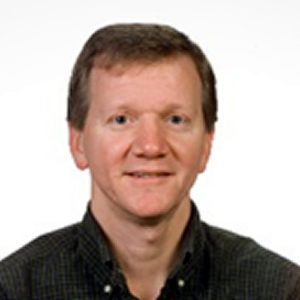
Mr. Don Simon is a Control Systems Engineer working in the Intelligent Control and Autonomy Branch of the NASA Glenn Research Center in Cleveland, Ohio. He holds a bachelor’s degree from Youngstown State University and a master’s degree from Cleveland State University, both in electrical engineering. He has over 30 years of experience in aerospace propulsion controls and diagnostics and is currently supporting ongoing NASA research in electrified aircraft propulsion.
In support of aviation fuel burn and emission reduction goals, NASA is pursing high-payoff research investments that promise to transform aviation. This includes investments in Electrified Aircraft Propulsion (EAP), which relies on the generation, storage, transmission, and use of electrical power for producing thrust and optimizing propulsion system efficiency. Multiple technology challenges must be addressed to unlock the full potential of EAP. This includes advances in propulsion controls, which will be vital for ensuring coordinated efficient operation of the complex integrated subsystems that comprise EAP architectures. To support EAP controls research, the NASA Glenn Research Center has developed the Hybrid Propulsion Emulation Rig (HyPER). The HyPER laboratory hardware includes shaft-mounted electric machines, power converters, power supplies, power distribution cables, and an energy storage device that can be reconfigured to represent a variety of EAP architectures. It also includes an integrated real-time computer system that hosts developed EAP control software and turbomachinery simulations. This enables the electrical system and rotating shafts of EAP designs to be implemented in actual hardware and integrated with turbomachinery simulations and system-level EAP control logic implemented in software. In this form, the HyPER laboratory provides a partially simulated, partially hardware-in-the-loop test environment enabling the initial development and evaluation of EAP control technology.
A prerequisite for the development of EAP control designs is the availability of a system model that accurately reflects the operation of the electrical system hardware. To support this need, a digital twin model of the HyPER electrical system hardware is under development. This model is being coded in the MATLAB Simulink environment and uses the NASA-developed Electrical Modeling and Thermal Analysis Toolbox (EMTAT) to construct a digital twin framework. EMTAT contains generic electrical component building blocks that are simulated at turbomachinery timescales. Associated inputs and outputs allow the blocks to be combined to model complete electrical systems. The EMTAT blocks also contain adjustable internal maps and parameters that can be set to reflect the operation of a specific electrical component. For the HyPER digital twin, the settings of these EMTAT block internal maps and parameters is determined through machine learning approaches applied to characterization run data collected from the laboratory. During characterization runs the laboratory electrical system hardware is subjected to a full range of torque, speed, and power settings. Acquired data is then used to estimate EMTAT block parameters using a variety of machine learning techniques. The resulting digital twin model is found to match the operation of actual HyPER hardware with an accuracy suitable for control development purposes. It also holds promise for other applications including modeling the performance of HyPER laboratory reconfigurations and model-based anomaly detection. Planned follow-on work to automate post-processing of acquired laboratory data to update the HyPER digital twin model will also be presented and discussed.
A prerequisite for the development of electrified aircraft propulsion (EAP) control designs is the availability of a system model that accurately reflects the operation of the electrical system hardware. This presentation will present a data-driven approach for modeling EAP systems.